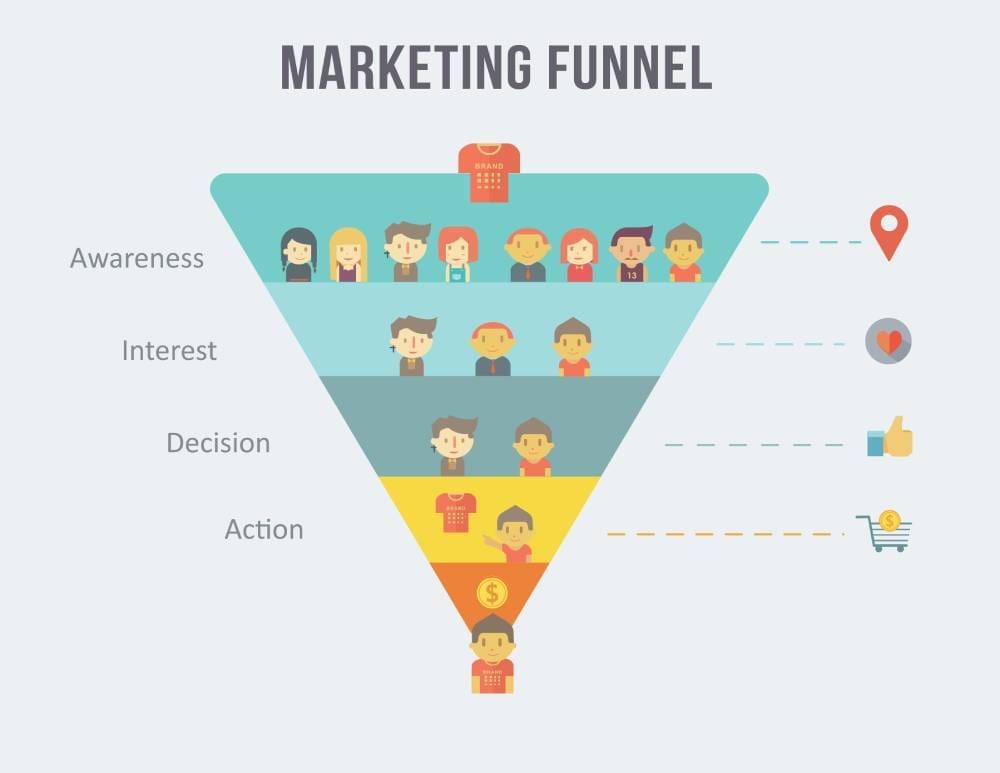At the crux of it, content marketing seems quite simple. Research some topics, create your content, publish it, and share it to the world. Why then, does so much content fail to make the impression you want it too? Well the truth is, it’s really not simple. The right content marketing is about finding the right topics, promoting and targeting within the right audience, and doing it at the right time. There is definitely an art to it.
Legal content unfortunately has a ‘boring’ stigma somewhat attached to it. All content needs to engage your audience, but law is slightly more complex than most other topics and can sometimes slip through the net. The amount of Jargon can sometimes make you feel like you’re reading a thesaurus. Now, you might like that, and each to their own, but it doesn’t have to be that way.
Let’s take a look at how to create engaging content, what the benefits might be, and how we can create your law firm’s content strategy.
What are the benefits of content marketing?
On the surface you might think the benefits purely come in your vanity metrics. Likes/comments/traffic = success. While boosting web engagement and traffic are definitely benefits of a successful content strategy, there are a whole host of others too. Things like:
- Driving organic traffic with SEO rich content
- Increasing website authority by generating backlinks from authoritative sites
- Growing an effective email list
- Reaching and expanding your social media reach and engagement
- Acquiring leads from your ‘call to action’ phrases
- Higher quality leads from location/expertise specific content
- Boosting credibility, expertise, and thought leadership value
Experimenting with different content strategies, styles, lead magnets, etc. will bring a host of benefits to your law firm. So, how should my content marketing strategy look?

As previously mentioned, it’s not as simple as just doing some research, creating some stuff, and sending it out into the world. The internet is massive, and I mean MASSIVE. It’s so easy to get lost in the noise, so we need to be thorough. Following a strict process will give your content a great chance to stand out! Here are some key steps that you can undertake to create great content.
1) Research
The research phase is crucial. It’s not just about researching ideas for your content, but researching the whole market. First we need to understand who your audience is. What are their interests, what are they searching for, what are they struggling to find answers to, what resources are they using? Identifying these items will help you grasp your topics, your CTA’s and who you should target.
Once we’ve got some background into your audience, we can have a look at some keyword research, and some competition research. Utilise some open market tools like Semrush to analyse what keyword terms are being searched and find any backlinking opportunities. If you’re a smaller regional firm, are there any location specific keywords you can use, or if you specialise solely in mental health law, should you be using more optimised niche keywords. Make a list of keyword queries you want to target, and create content revolving around them.
Similarly, have a look online to research your competitors. What kind of content are they making? What keywords are they targeting, and how is it ranking? Review their blog, webpages, any video/audio content, their lead magnets, social media and CTA’s. Gather some insight into what is successful and what isn’t as successful, but be mindful however, that not everything may overlap with your audience. Take whatever relevant lessons you can, and try to execute your own version of the most engaging aspects!
2) Build your content funnel
A content funnel consists of top, middle, and bottom funnel content that aims to move leads along the buyer journey from a prospect to a sale. It is important to distinguish the difference and understand what each piece of content aims to achieve.
Top funnel:
Top funnel content is essentially awareness and information content. It aims to address the topic at hand, answer any questions, create how-to guides, and serve as wide an audience as possible. Top funnel content is informative and educational, and might encompass a blog, ultimate guides, or video/podcast content. It typically addresses anyone in your target audience.
Middle funnel:
Middle funnel content targets the users who are aware of the problem they face, and are actively searching for a solution. This is likely someone who is in the ‘research phase’ of their buyer journey. Prospects are scoping out who the best option is to address their problem. This type of content is normally service related, and aims to both inform, and guide visitors to some form of meaningful action. Middle funnel content would normally include testimonials, case studies, FAQ’s, and in-depth specific guides, etc.

Bottom Funnel:
Bottom funnel content is where you aim to convert. Everything is catered towards getting someone to make some form of action. You will be utilising compelling CTA’s and lead magnets to encourage users to do something. These types of pages might be landing pages, sales letters or the ‘contact’ page on your site. Some sites might even have individual ‘sales landing pages’ away from the site’s main navigation, encouraging users to take action instead of visiting other parts of your website.
Try to build content that reaches every stage of the buyer journey such that you’re catching every lead you can! Every piece of content needs a goal and a target audience, so establish where content fits along the buyer journey, and then you’ll be able to determine its success later down the line.
3) Creating content
Now we’re into the main bulk of your content marketing strategy. Content itself! Explore different types of content to keep your audience engaged. It doesn’t have to be just a blog. Other types of content might be:
- Interviews
- Podcasts
- Ebooks
- Landing Pages
- Webinars/training resources
- How to Guides
- Educational resources
- Live streams
- Newsletters
- Paid ads
You might also have a whole host of traditional content outside of the digital sphere. Regardless, it is important that you focus on quality over quantity. Establish a regular schedule with your content, and stay consistent. If your schedule only allows a few posts a month, then start there and work your way up. Don’t just cram content out the door for the sake of it! Over time it will get easier to create and repurpose content to reach more users on a more regular basis.
4) Establishing a sharing strategy
It is important that your content is shared as efficiently as possible. This doesn’t just mean posting it on your Twitter and LinkedIn feeds and then just leaving it be. If you do have social media, then of course do do that, but there are other ways to build authority and traffic to your content.

Try to attract outbound links by reaching out to authoritative sites and showcasing your content to them. Encouraging third-party sites to provide some form of backlinking will be massively valuable to its search engine presence. In theory your content should be unique and valuable so other sites should be happy to highlight it! If you have an email list, maybe share your content there too. Utilise a variety of mediums to share your content.
5) Provide regular updates
Some content is quite static. What I mean by that is that once it’s complete and uploaded, it doesn’t change. A blog post with some facts about how many visitors went shark diving in Australia in July 2021 isn’t going to change from month to month. However, some of your content does need regular maintenance to ensure that your audience can gain maximum value.
Landing pages for example, need to be optimised to rank well for organic traffic. Whilst technical changes are generally long lasting, there is a recency bias with organic SEO results, so it’s best to keep refreshing any copy or links that you feel are somewhat outdated. Sometimes topics and trends change, so this is a way to capitalise on any evolving markets without creating new content.
6) Measure your results
Hopefully, by this stage everything is researched, created, and published. We can now look to the results phase, one of the most crucial of all. If you’re not tracking your results, how can you possibly know if all the effort you put into your content has led to any success.

As aforementioned your content will have a set goal. Not every piece of content you create will have the same goal, some might be boosting engagement, and some might be sales conversions. Measure your results according to that set goal, and try to establish where you are and aren’t meeting your targets. Pages performing well might provide valuable insight that you can replicate on other poorer performing pages. Tools like Google Analytics will track a lot of helpful metrics, so be sure to use any tools you can at this stage! Tinkering along the way will help improve your results.
Final thoughts
Content in any form is a powerful way of winning leads, establishing your online visibility/credibility, and driving traffic. There is so much content you can utilise to engage your audience, and drive all different types of results. Be creative, unique, informative, and well researched. Combine this with a well established schedule of quality over quantity, and an effective distribution strategy. Over time your content marketing strategy will get better and better, delivering quality results, and drastically improving your ROI.
If you would like any help or have any other questions about your content marketing strategy, please contact us here for a free consultation.




